| |
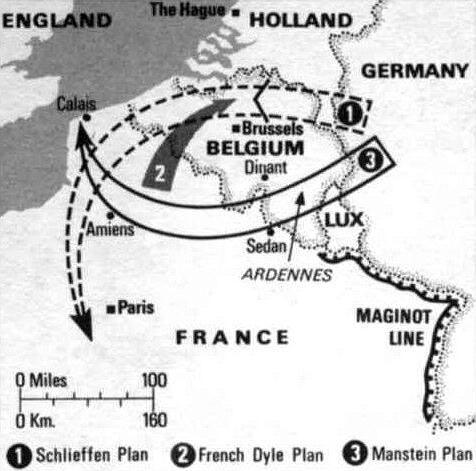 |
French
and German Plans for the Battle of France 1940
Allied military plans expected the German armed forces to strike using
a variant of the Schlieffen Plan used in the First World War. The French Dyle
Plan intended to meet the German offensive in Belgium. The Germans, however,
adopted a plan attributed to Erich von Manstein that placed the weight of the
attack at the center of the front and thus anticipated the French plan. |
| |
 |
Battle of France, Dunkirk: May
25-31, 1940
German armed forces pressed the Allied armies trapped in the
north, from south and east, into the English Channel. Meanwhile,
German infantry divisions reinforced the southern flank of
the the German penetration. |
| |
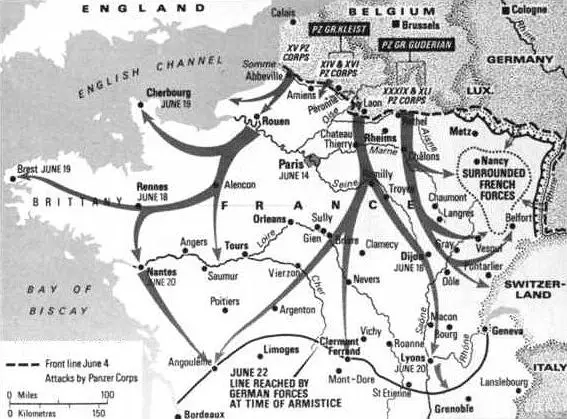 |
Battle
of France: June 4-22, 1940
German armored forces continued to press their attack southward
until the Franco-German Armistice was signed on June 22, 1940. |
| |
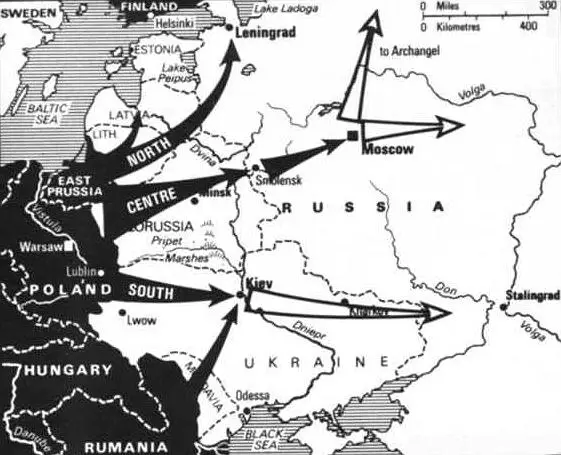 |
OKH Plan
The revised German Army High Command proposal for an invasion
of the Soviet Union added weight to the attack toward Leningrad
and called for a separate army group for this purpose. It
also anticipated further eastward exploitation, independently,
by the central and southern army groups. |
| |
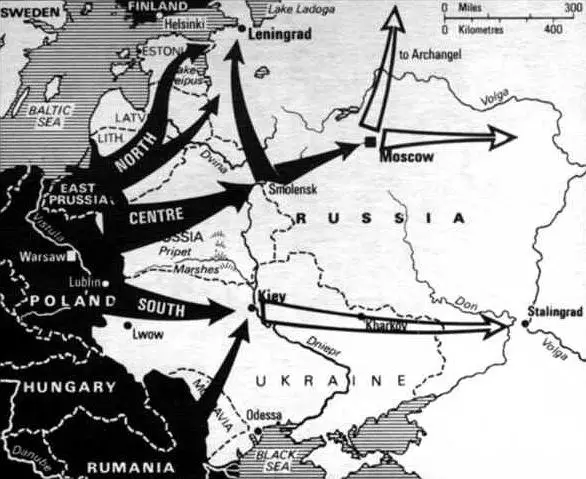 |
Final Plan
After consultations with Hitler, the final plan for Operation
Barbarossa called for the diversion of forces from the central
army group, after the capture of Smolensk, to support the
northern army group in attacking Leningrad and only after
achieving this would the central army group continue operations
toward Moscow. The objectives of the southern army groups
essentially remained the same. |
| |
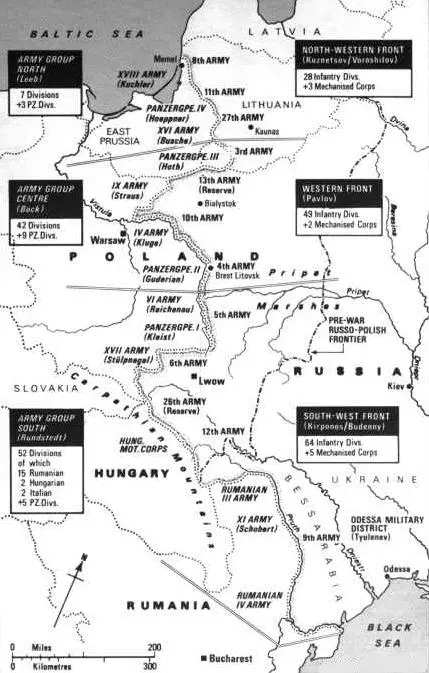 |
June 21, 1941
Three German army groups faced three Soviet fronts. The German
forces had effective superiority at the center of the front.
Soviet forces held a numerical advantage on the northern
and southern flanks. |
| |
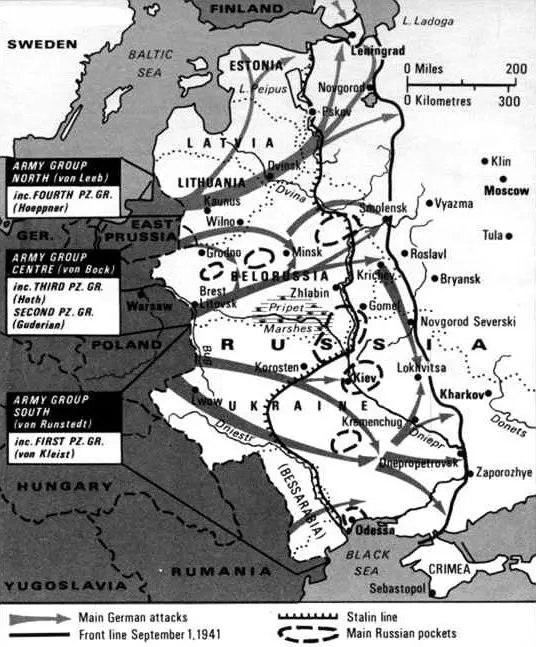 |
Map - Operation Barbarossa: June
22nd 1941
German armed forces achieved strategic surprise and made substantial
progress towards their initial objectives. Army Group Center
reached Smolensk by July. Large Soviet military forces were
surrounded as a result. An operational pause ensued at the
center of the front while armored forces from Army Group Center
drove south to link up with forces driving northward from Army
Group South. This move destroyed a substantial concentration
of Soviet armed forces around Kiev. |
| |
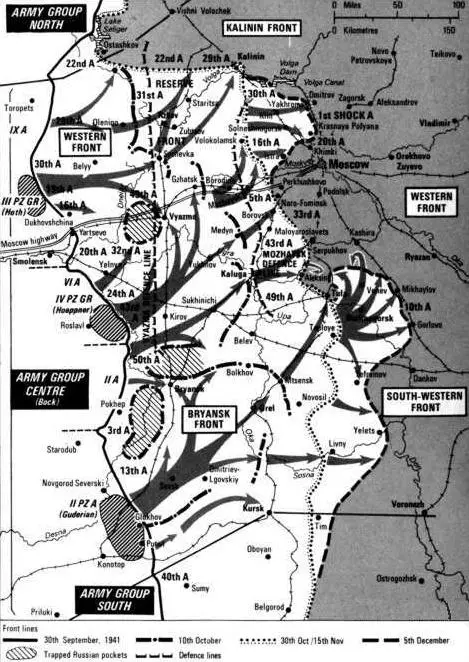 |
Operation Typhoon: September 30
- December 5, 1941
German armed forces regrouped in September, after the destruction
of Soviet military forces around Kiev, with the intention
of launching a final offensive against Moscow (Operation Typhoon)
before winter. The attack began with promise but the autumn
rains made it impossible to continue the operation until the
winter frost arrived. By this time, German military units
were exhausted and the Soviet defenders were demonstrating
increasing resistance. |
| |
| |
|
| |